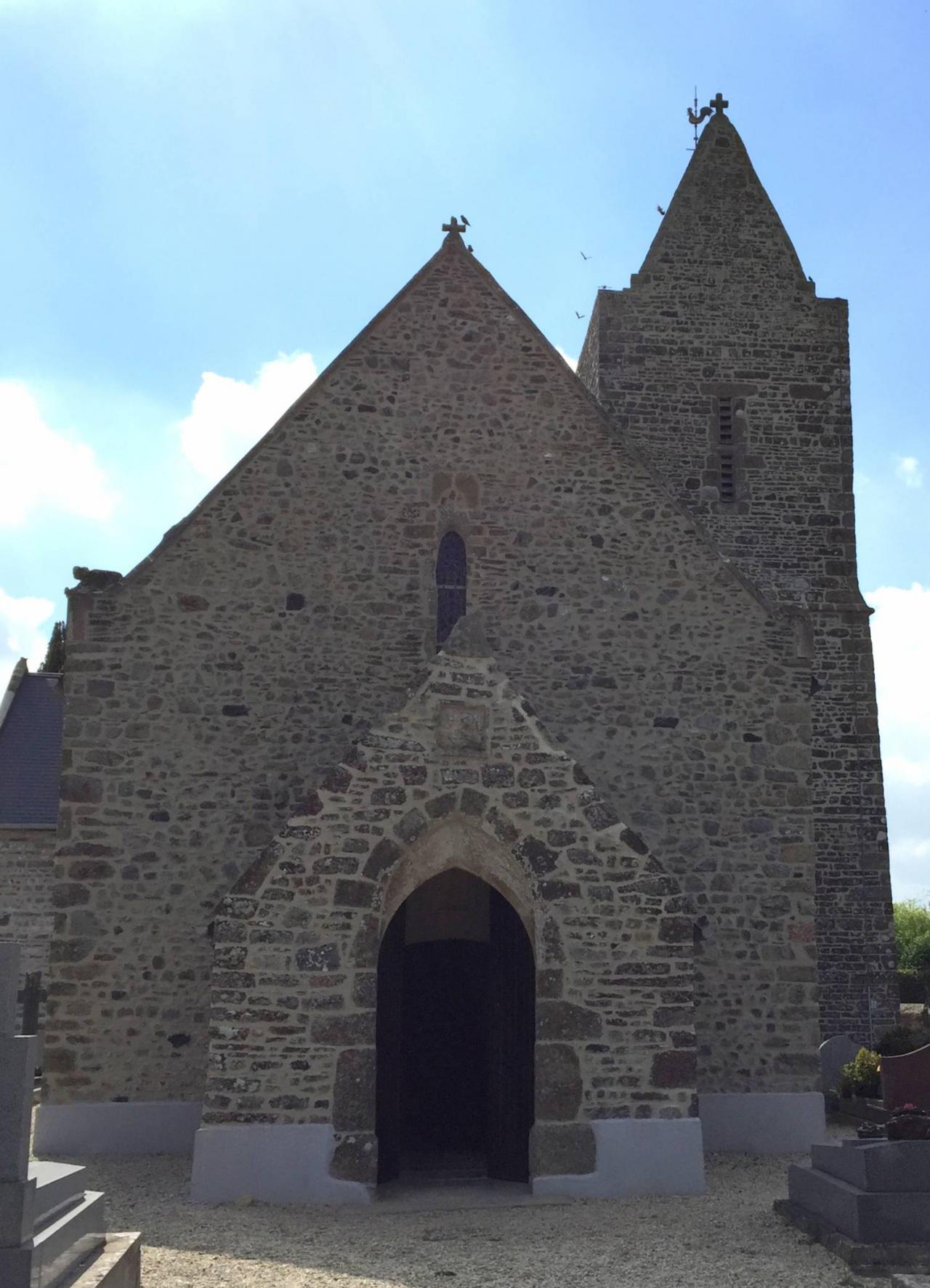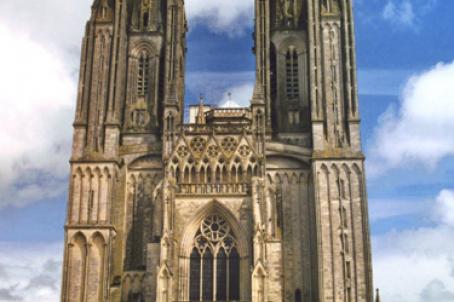Church of Saint-Pierre
The Church of Saint Pierre de Heugueville sur Sienne was given to the Abbey Lessay around 1080. Following the Hundred Years War, this Norman church, located at the estuary of Siena, suffered damage that required repairing the tower and porch. The church is composed of a nave of five bays, a false transept surmounted by a saddle bell tower and a choir with flat bedside of 3 bays.
About this building
The church of Saint Pierre de Heugueville sur Sienne was donated to the Abbey of Lessay in about 1080 by Renaud d'Orval. In 1236 the Abbé de Lessay ceded the parish of Heugueville, as well as other parishes, to Bishop Hugues de Morville in exchange for the title of Honorary-Canon.
From the twelfth century until the beginning of the twentieth century, the marsh of Heugueville was famous for its pitch that the farmers transported each day by thousands of carts to improve the surrounding lands. This activity generated the presence of numerous businesses, in particular drinking places and horse relays.
Following the Hundred Years' War (14th-15th centuries), this typically Norman church, located at the Siena Estuary, suffered damage that required the upper part of the tower and the porch of the church to be reworked.
The church is composed of a nave of five vaulted arches, the last span forming, with a chapel to the north and south, a false transept. It is surmounted by a bell tower (2 inclined roof slopes) housing two bells from 1731. The nave is extended by a 3-bay choir with a barrel vault covered with plastered paneling. An elongated sacristy is contiguous to the south of the last span of the choir. The walls are in stone and the slate roofs.
Many repairs were made in the eighteenth and nineteenth century and much of the furnishings, partly destroyed during the Revolution, was replaced or restored. It was also at this time that the high altar and the altarpiece with the Assumption cloth from the convent of the Capuchins of Coutances were installed in the church.






